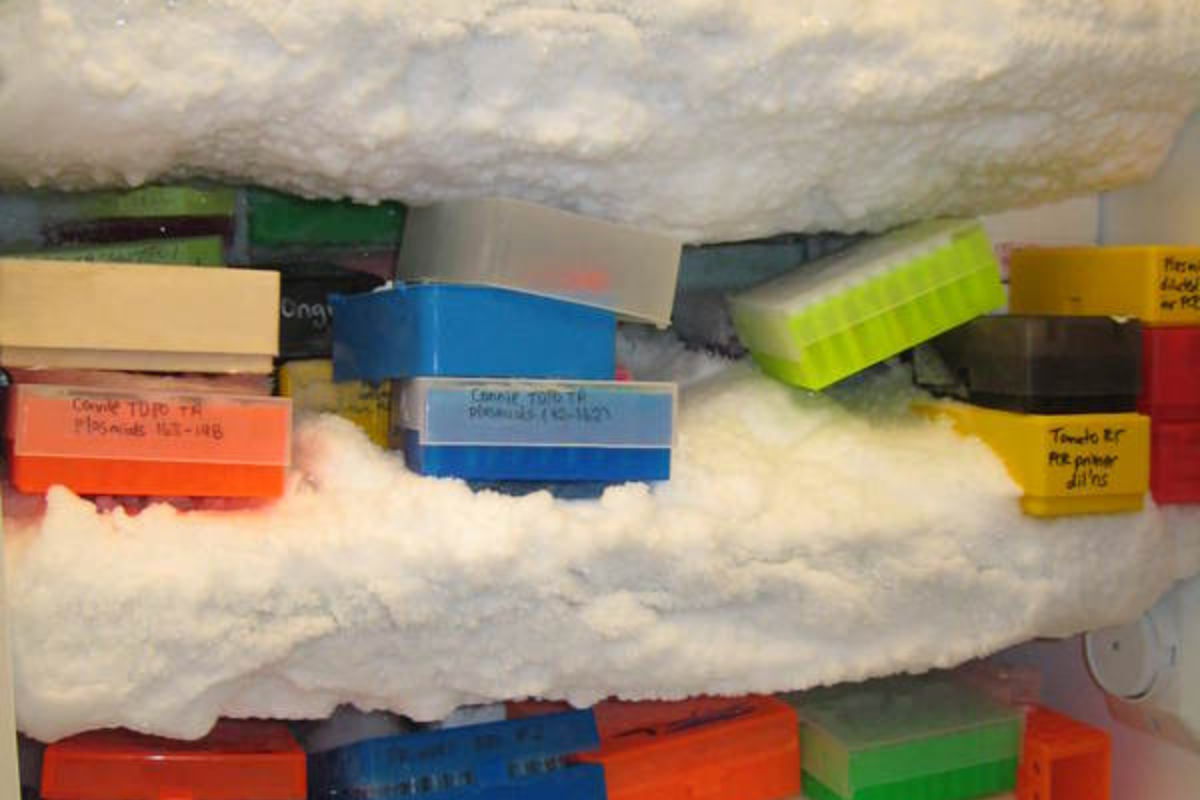
Cornell laboratories once again participated in a global energy-saving competition - the Freezer Challenge - to improve energy conservation and research outcomes by targeting cold storage opportunities.
Labs are one of the most resource-intensive spaces for any industry, including higher education. But small changes to cold storage management can have a large impact on energy and resource use. The Freezer Challenge incentivizes action by encouraging friendly competition (and solution-sharing) between research-intensive laboratories that rely on cold storage.
During the 2022 competition, the Jones Laboratory at Weill Cornell which advances research on cellular immune therapies to improve the health of people living with HIV, was the top energy reducer among Cornell participants.
Cornell labs reduce energy during competition - with big impacts
Laboratories are highly energy-intensive. For instance, Bradfield Hall is one of Cornell’s most energy-intensive buildings on campus. According to Harvard University, a typical science laboratory uses more than three times as much energy per square foot as an entire office building.
This year, four Cornell labs elected to participate in the competition: Jones Laboratory Weill Cornell saved 11.95kWh/day , Peck Lab - saved 5 kWh/day, De Vlaminck Lab saved 4 kWh/day, Bryan Swingle Lab saved 6.45 kWh/day.
Each laboratory tracked the impact of energy-saving measures targeted at cold storage. The international competition provided an outlet for laboratory managers and research teams to pinpoint high-impact energy saving opportunities.
Collectively, Cornell labs' efforts led to big energy savings; together, the four competitors saved a total of 27.4 kWh of energy per day. The four labs combined saved an estimated 4320kWh of energy during the competition.
Laboratories are the most energy-intensive spaces on campus. For instance, Bradfield Hall is one of Cornell’s most energy-intensive buildings on campus, while the energy use from fume hoods alone is responsible for about 1/3 of the total campus electricity footprint each year.
Global impact from reducing freezer energy use
Organizers My Green Lab and the International Institute for Sustainable Laboratories emphasize implementing best practices in cold storage management to achieve greater energy efficiency, sample integrity, and sample access. According to Harvard University, a typical science laboratory uses more than three times as much energy per square foot as an entire office building.
Over 1,200 labs from 27 countries participated in this year's competition. Their combined efforts saved a total of 6,732 metric tons of carbon dioxide. This is the equivalent of the energy consumption of over 1,300 homes for one year.
Since the competition began in 2017, it is estimated participants have saved over 24 million kWh of energy, reducing emissions by 16,796 metric tons, the equivalent of saving energy consumed by 3,268 homes for one year.
Join the 2023 competition
Laboratory managers and other interested parties can sign up to be notified about the next competition, which launches in January 2023.
JOIN THE 2023 FREEZER CHALLENGE
Looking for more ways to get involved? Be sure to check out the Cornell Green Lab program or details from the

